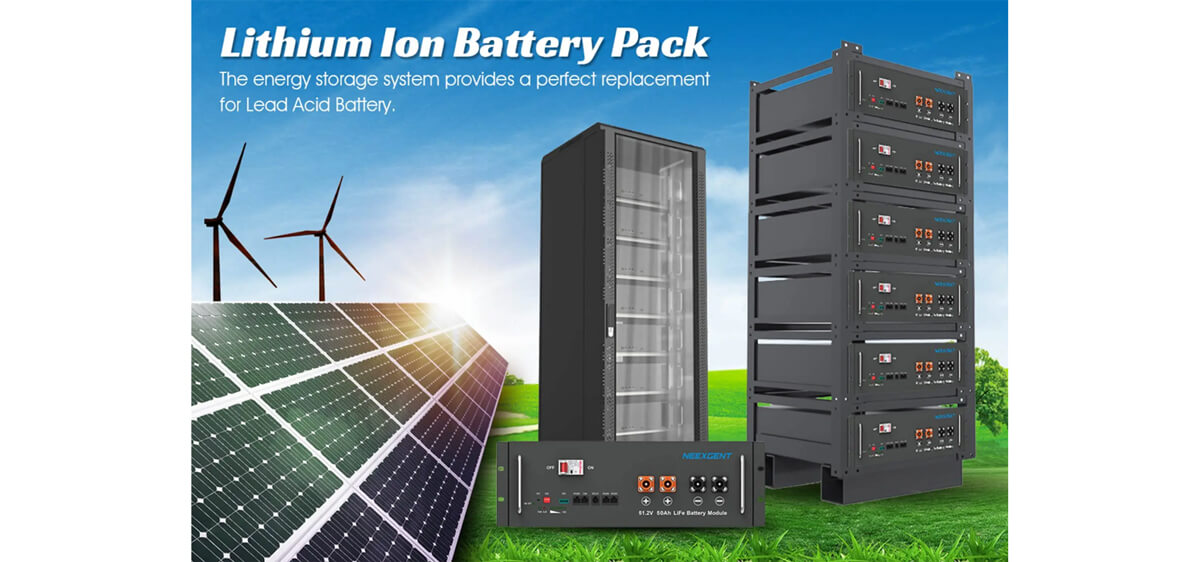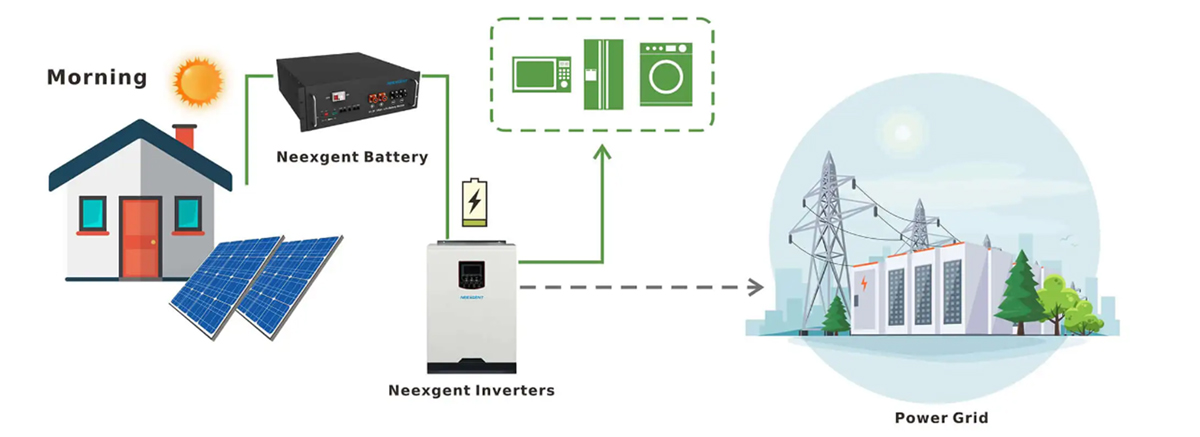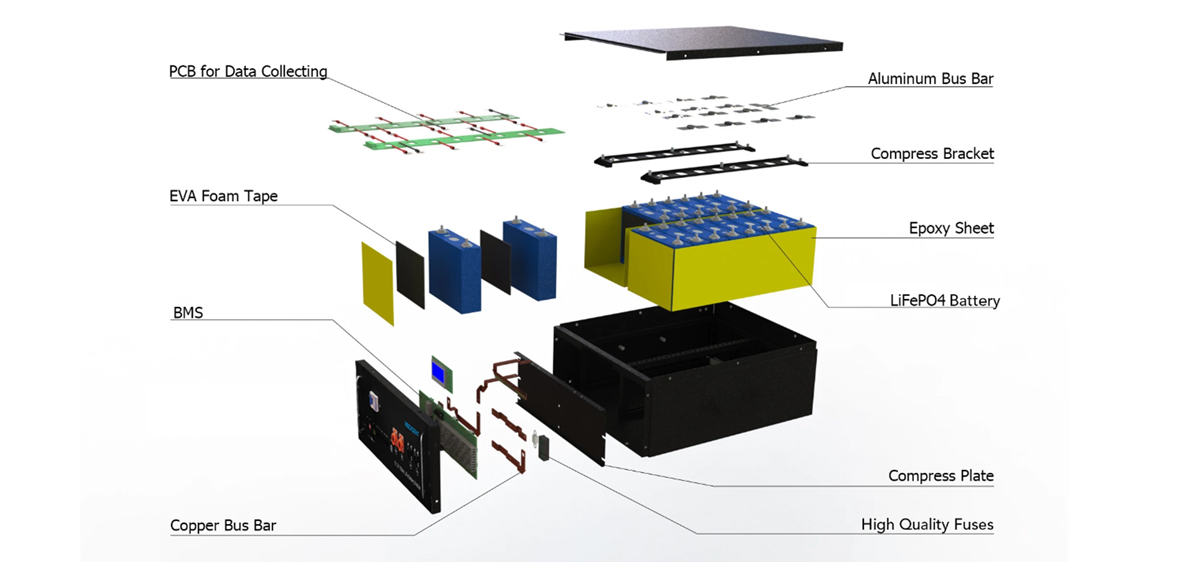In the ever-evolving landscape of technology and data centers, the need for efficient and reliable power solutions has become paramount. As the demand for computing power and data storage increases, so does the requirement for innovative energy storage solutions. Enter rack power storage—a cutting-edge technology that promises to revolutionize the way data centers and other power-intensive facilities store and manage electricity. In this article, we delve into the world of rack power storage, exploring its benefits, applications, and the potential it holds for a sustainable energy future.

NEEXGENT Rack Power Storage
1. Understanding Rack Power Storage:
Rack power storage, also known as rack-level energy storage, involves integrating energy storage systems directly into server racks. This strategic placement brings several advantages, such as reduced transmission losses, improved power quality, and increased efficiency. By localizing energy storage at the rack level, data centers can better manage power demand, provide backup power during outages, and enhance grid stability.
2. Benefits of Rack Power Storage:
- Enhanced Reliability: Rack power storage ensures uninterrupted power supply to critical applications, minimizing downtime and improving overall system reliability. It acts as a buffer during power fluctuations, allowing seamless transitions between grid power and stored energy.
- Load Balancing and Demand Response: By strategically managing power usage at the rack level, data centers can optimize energy consumption and alleviate strain on the electrical grid. Rack power storage enables load balancing, reducing peak power demand and enabling participation in demand response programs for improved energy efficiency.
- Renewable Integration: Rack power storage facilitates the integration of renewable energy sources, such as solar and wind, into data centers. It allows for better utilization of intermittent renewable power by storing excess energy during periods of low demand and releasing it when needed.
- Cost Savings: Implementing rack power storage can lead to significant cost savings for data centers. By reducing peak power demand, it helps avoid expensive demand charges imposed by utility companies. Additionally, it provides an alternative to costly backup generators and uninterruptible power supply (UPS) systems.
3. Applications of Rack Power Storage:
- Data Centers: Rack power storage offers data centers a reliable and flexible power solution, ensuring continuous operation of critical infrastructure. It enables efficient power distribution and load management, allowing data centers to scale their operations while reducing their environmental impact.
- Edge Computing: As edge computing continues to gain prominence, rack power storage becomes invaluable in ensuring the resilience and autonomy of edge data centers. By providing backup power and load balancing capabilities, it enhances the reliability and efficiency of edge computing deployments.
- Smart Grids and Microgrids: Rack power storage contributes to the development of smarter and more resilient electrical grids. It enables the integration of distributed energy resources, smooths out fluctuations in energy supply and demand, and supports local microgrids for enhanced energy security and sustainability.

4. Future Prospects and Challenges:
Rack power storage represents a significant step towards achieving sustainable and efficient power management. However, several challenges need to be addressed for its widespread adoption. These include optimizing storage capacity, managing heat dissipation within server racks, ensuring interoperability between different systems, and developing standardized protocols for integration.
The future prospects for rack power storage are promising. As energy demands grow and environmental concerns intensify, this technology holds the potential to revolutionize the power infrastructure of data centers and other power-intensive facilities. By unlocking the benefits of localized energy storage, we can reduce carbon footprints, enhance grid resiliency, and pave the way for a greener and more sustainable energy future.
With ongoing advancements in energy storage technologies and increasing focus on sustainability, rack power storage is poised to play a crucial role in shaping the future of power management. The ability to store energy directly at the rack level empowers data centers and other facilities to optimize their power usage, reduce reliance on traditional grid infrastructure, and embrace renewable energy sources.
The integration of rack power storage into smart grids and microgrids enhances the overall stability and reliability of the electrical infrastructure. By enabling efficient energy distribution, load balancing, and demand response capabilities, rack power storage supports the development of resilient power systems that can adapt to changing energy needs.
While the potential of rack power storage is immense, there are several challenges that must be addressed to ensure its widespread implementation. One of the primary concerns is maximizing storage capacity within server racks while maintaining the necessary physical space for computing equipment. Efforts are underway to develop compact and high-capacity energy storage solutions that can seamlessly integrate into existing infrastructure.
Another critical aspect is managing heat dissipation within server racks. Energy storage systems generate heat, and effective cooling mechanisms must be implemented to maintain optimal operating conditions and prevent any adverse impact on the performance and longevity of computing equipment.

Interoperability between different rack power storage systems and compatibility with existing power management infrastructure is also crucial. Standardized protocols and interfaces are needed to ensure seamless integration and interoperability across various vendors and technologies. This will facilitate the scalability and flexibility required for widespread adoption.
Rack power storage holds immense promise as a transformative solution for efficient and sustainable power management in data centers and power-intensive facilities. By leveraging the benefits of localized energy storage, we can enhance reliability, reduce costs, integrate renewable energy sources, and contribute to a greener and more resilient energy future. Continued research, development, and collaboration across the industry will be instrumental in overcoming the existing challenges and unlocking the full potential of rack power storage. With innovation and a collective effort, we can harness the power potential of rack-level energy storage and drive positive change in the way we manage and consume electricity.








